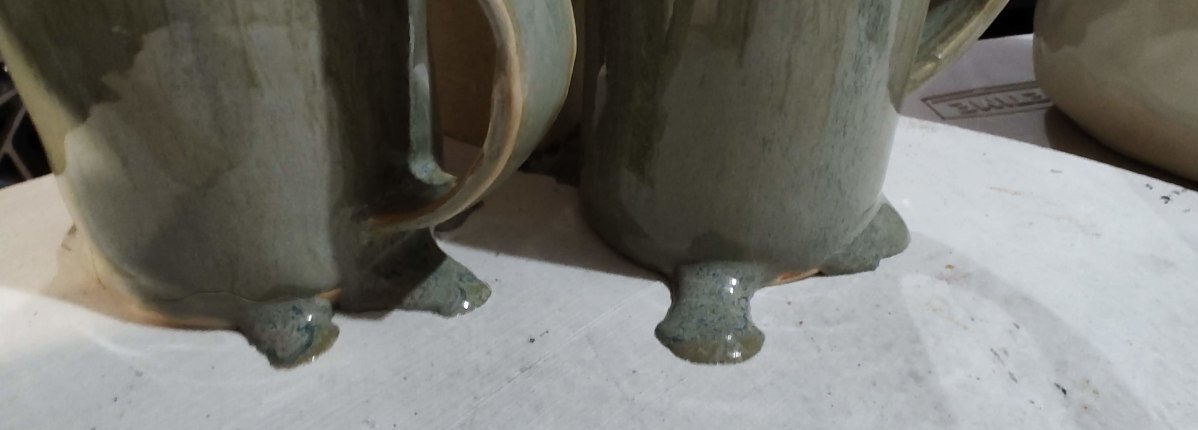Techniques and Tips for Perfectly Glazed Pottery Without the Mess.
Summary
Key Points
Possible Causes of Glaze Runs
Glaze Composition: Different glazes have unique compositions that affect their melting points and fluidity during firing. Glazes with high amounts of fluxes, such as feldspar, can become very fluid and run easily when melted. Understanding the specific properties of your glaze is essential to managing its behavior in the kiln.
Application Thickness: Applying glaze too thickly is a common cause of excessive running. A thick glaze layer will melt and flow more during firing, increasing the risk of runs. It’s important to apply glazes evenly and not too heavily to maintain control.
Firing Temperature: The firing temperature plays a significant role in how a glaze behaves. Over-firing, or firing at too high a temperature, can cause glazes to become overly fluid. Ensuring you fire your pottery at the correct temperature for the glaze used is crucial.
Controlling Glaze Runs
Testing and Adjusting Glazes: Conducting test tiles for your glazes can help you understand their behavior. By adjusting the glaze composition, such as reducing flux or adding more stabilizers like alumina, you can control the fluidity. Small adjustments can make a significant difference.
Application Techniques: Use techniques like dipping, pouring, or spraying to apply a consistent and controlled glaze layer. Brushing can sometimes result in uneven thickness, which can contribute to running. Practice applying thinner layers to avoid excess glaze buildup.
Kiln Shelf Protection: Place your pottery on kiln stilts or use high-temperature kiln wash on your shelves to protect them from glaze drips. Kiln wash creates a barrier that prevents glazes from fusing to the shelves, making clean-up easier and protecting your shelves from damage.
Preventing Glaze Runs
Stopping the Glaze Line: A good rule of thumb is to stop your glaze application about 5mm to 20mm above the base of your pottery piece. This buffer zone allows for any running that may occur during firing without reaching the kiln shelf. This could be much higher if you have very runny glaze, so this is a guide only.
Using a Wax Resist: Applying wax resist to the bottom edges of your pottery can help prevent glaze from running all the way down. The wax prevents the glaze from adhering to the pottery where applied, effectively stopping runs in their tracks.
Layering Glazes: When layering glazes, it’s essential to understand how they interact. Some glazes, when layered, can become more fluid and run more than they would on their own. Test combinations on small pieces or tiles to see how they behave together before applying them to larger pieces.
Conclusion
If you’re struggling with glaze runs, it’s important to assess the potential causes and adjust your techniques accordingly. Depending on the issue, you may need to tweak your glaze recipes, refine your application methods, or alter your firing temperatures. With careful attention and testing, you can achieve beautifully glazed pottery without the worry of excessive running. If you’re unsure about how to control your glazes, consider consulting with experienced potters or ceramic artists for guidance. Properly managed glazes should enhance your pottery, adding to its beauty without causing problems during firing.


